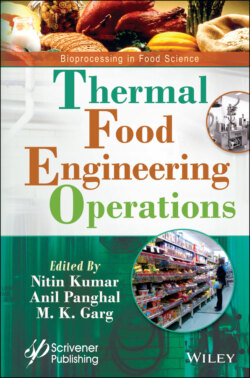Читать книгу Thermal Food Engineering Operations - NITIN KUMAR - Страница 10
Оглавление
Preface
Thermal processing is a significant component of the undergraduate and postgraduate degrees in agriculture engineering, food engineering and food science technology throughout the world. Thermal food engineering operations are considered one of the core competencies for these programs and in industries as well. Researchers will be able to use the information as a guide in establishing the direction of future research on thermophysical properties and food processing. The audience for this volume will be the student preparing for a career as a food engineer, practicing engineers in the food and related industries, and scientists and technologists seeking information about processes and the information needed in design and development of thermal food engineering processes and operations. Simultaneously, improving food quality and food safety are continue to be critical issues during thermal processing. So, quality, food safety and role of technology in food industry are discussed to cover these areas of food industry.
A great variety of topics is covered, with the emphasis on the most recent development in thermal operations in food industry. The chapters presented in this volume throw light on a number of research subjects that have provided critical information on different thermal processes, their impact on different food components, and their feasibility in food industry. Each chapter also provides background information of the changes in different thermal operations which changed drastically over the years. The authors emphasis on newer thermal technologies which are making a great impact on the industry and the resulting finished products. The adoption of modern technology has increased efficiency and productivity within the factory. Most importantly, utilizing the newer thermal operations has greatly improved product quality. All chapters are supported with a wealth of useful references that should prove to be an invaluable source for the reader. Self-explanatory illustrations and tables have been incorporated in each chapter complimentary to the main text.
Thanks are due to all authors for contributing their knowledgeable chapters in this volume and helping us to complete the book. We also thank the authorities of Chaudhary Charan Singh Haryana Agricultural University, Hisar for their help and support. Finally, we also express indebtedness and thankfulness to Scrivener Publishing and Wiley team for their unfailing guidance and helpful assistance.
Nitin KumarAnil PanghalM.K. Garg
